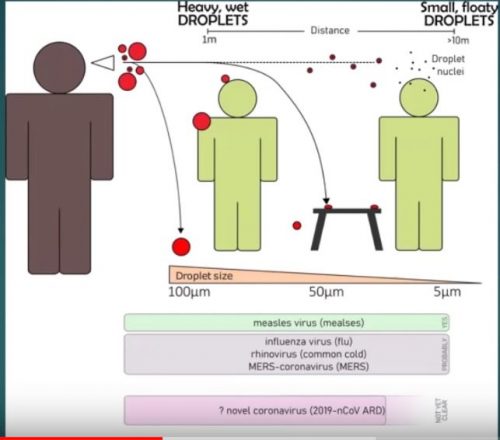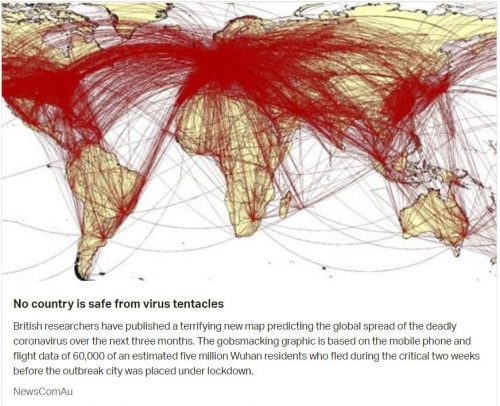Are greedy racist “Wall Street” bank lenders responsible, or progressive politicians?
The housing finance systems of some developed countries have failed, but only the U.S. federally dominated system failed systemically twice in two decades, the second time in 2008 with global repercussions. Then Republican Mayor of New York now 2020 Democratic presidential candidate Michael Bloomberg blamed politicians for pushing lenders to make loans to “poor people” in low income neighborhoods that they couldn’t afford. 2020 progressive Democratic presidential candidate Warren, apparently reflecting the views of the Party, responded to Bloomberg: “That crisis would not have been averted if the banks had been able to be bigger racists.”
The Dodd-Frank Wall Street Reform and Consumer Protection Act passed in 2010 creating Warren’s proposed Consumer Financial Protection Bureau and the Financial Stability Oversight Council (FSOC) to Monitor and Mitigate Systemic Risk made up of the various financial regulators reflects the Warren/Democratic narrative. This narrative is the foundation of not just housing and financial sector policy proposals, but the entire progressive agenda.
I’m from the federal government and I’m here to help you.
That’s the punch line to the joke about the three biggest lies Pres Martin used to tell about a half century ago as past Chairman of the Federal Home Loan Bank Board (FHLBB) (hence Freddie Mac’s first Chairman) and Vice Chairman of the Federal Reserve System.
The first wave of “help” came after the repeated waves of bank failures with the creation of the Federal Reserve System in 1913. The second wave came during the Great Depression with deposit insurance and associated regulation of the banking and savings and loan industries. This was followed by the creation of FHA mortgage insurance: to stimulate FHA demand, Fannie Mae was created make a market for which there were few buyers or sellers. By the late 60’s, rather than end a failed experiment Fannie Mae was “privatized” and the public monopoly was subsequently expanded to a tri-poly with the addition of Freddie Mac and Ginnie Mae, all funding fixed rate mortgages (FRMs) first introduced by FHA. As Milton Friedman famously said, “there is nothing so permanent as a temporary government program.”
It didn’t help potential borrowers much. The resulting federally dominated U.S. Housing Finance System had been touted as the best in the world, a model to emulate for developed, developing and transitioning economies alike during the three decades prior to the 2004-2007 sub-prime mortgage lending debacle and globally systemic financial crisis of 2008. But the benefits are hard to identify: the U.S. homeownership rate is about the same as in the mid 1960’s under the prior savings and loan system in spite of a 50% increase in female labor force participation, a historically low real interest rate and a dramatic shift from detached single family to condo apartments.
Civil rights legislation culminating in the Fair Housing Act of 1968 made racial discrimination in home sales a federal crime. The black homeownership rate which rose more than that for whites during the 2004-2007 sub-prime lending spree has returned to about where it was during the 1960’s.
Market Discipline versus Public Regulation
It didn’t help existing lenders much either. In the 1970’s federally sponsored agencies competed directly with federally chartered savings and loans whose investments were limited by regulators hamstrung by politicians to FRMs, forcing them to borrow short and lend long with callable insured deposits. Systemic failure was assured when interest rates rose as they did in the late 1970’s, with failures strung out over the 1980’s as regulators seized but often didn’t close zombie institutions, often run by academics.
Systemic risk, the simultaneous failure of many or all firms (and households) in an industry or across industries, primarily afflicts mixed progressive financial systems, i.e., those with privately owned but publicly regulated financial institutions. Firms in an un-or-less regulated market economy may be fragile but “Wall Street” traders mitigate systemic risk by betting against weak firms and industries, either forcing corrective action or failure hence the derogatory political reference to “speculators.” At the other extreme, state owned financial firms generally fail financially but face only a political bankruptcy constraint.
Two types of progressive policies created systemic risk. First those intended to mitigate the failure of individual firms with public insurance and prudential regulation, making failure less frequent but more systemic. Regulators prevent commercial bank failures purportedly to protect public confidence in the payments mechanism. Second are those policies intended to universally favor borrowers and/or creditors – like requiring mortgages to have a fixed rate – making systemic failure more likely and more costly.
Underwriting Mortgage Credit Risk: Discrimination and “Disparate Impact”
With the exception of the Great Depression and 2008 financial crisis, home mortgage credit losses had been “Gaussian (normally distributed),” that is, they followed a predictable pattern that allowed them to be insured according to the law of large numbers, for all practical purposes eliminating uncertainty, hence risk.
Loan data during the sub-prime lending debacle unambiguously supports Bloomberg as minority lending skyrocketed. Progressives imputed racist motives to excessive minority lending, arguing that “predatory” lenders “tricked” minorities into accepting loans they couldn’t afford so they could later foreclose. There is some truth to the first part, as banks solicited minority borrowers with loans they had to know were risky. But they had little incentive to foreclose, as that always resulted in a deep loss. What did motivate lenders?
Homeownership was no more affordable for black households during the 2004-2007 sub-prime lending bubble than it was in the 1960’s for a variety of reasons. But current Democratic presidential candidate Deval Patrick argued in 1994 as Deputy Attorney General of the Department of Justice that any final lending distribution that contained racial disparities—disparate impact—relative to population was a violation of federal law unless the lender could prove otherwise. Such “proof” of non-discrimination would be difficult to produce at best, since the disparity itself was considered proof of racial prejudice, and the cost of a legal defense is generally crippling. This was called “confiscation by consent decree” at the time and later “extortion by consent decree” for which Gaussian credit risk models didn’t apply.
Avoiding Black Swans
Former trader now internationally recognized risk expert – Nicholas Nassim Taleb describes in his 2007 book The Black Swan “how high impact but rare events dominate history, how we retrospectively give ourselves the illusion of understanding them thanks to narratives, how they are impossible to estimate scientifically, how this makes some areas but not others totally unpredictable and unforecastable, how confirmatory methods of knowledge don’t work, and how thanks to Black Swan-blind “faux experts” we are prone to building systems increasingly fragile to extreme events.”
Was the 2008 systemic failure an unpredictable Black Swan event? Politicians and their regulators who push the “Wall Street greed” narrative argued that nobody could have foreseen it, but Taleb exempts only economist Nouriel Roubini Crisis Economics (2010) from that delusion, who (pg. 16) concludes “it was probable. It was even predictable…” based on the failure of prudential regulation. But how did that fail? Systemic failure had long been predicted (by me and others, including the Federal Reserve) based on the progressive policies that attributed illegal racial discrimination motives to traditional income and appraisal underwriting.
No Skin in the Game
The sub-prime lending bubble of 1995 through 1998 financed with opaque securities issued by independent finance companies that following SEC rules reported phantom profits burst with no systemic consequences. By 2000 many of these former sub-prime lenders and securitization practices had migrated to the federally insured commercial banks in part to finance Community Reinvestment Act (CRA) lending commitments. These increased 500 fold after the deregulation of interstate Banking in 1994 when discretionary regulatory permission for M&A activity was held hostage to a favorable public CRA Report. Pushed by regulators and pulled by the big potential M&A payoff, borrower down payment requirements were virtually eliminated and bank “regulatory arbitrage” minimized capital requirements, virtually eliminating any Skin in the Game (Taleb, 2018). This asymmetric “trade” was irresistible.
The Perfect Storm
The Big Short by Michael Lewis presents the progressive narrative of “greedy” speculators who were shorting the housing market but doesn’t explain why they failed to prevent the bubble from inflating to systemic proportions by bankrupting lenders. The reason is that the cheap Federal Reserve credit continued to be channeled to the housing bubble by Fannie and Freddie. Historically conservative, they were now led by politically anointed CEO’s who, facing no bankruptcy constraint, willingly followed the path to perdition. This path was paved by HUD’s “Mission Regulator” who not only ratcheted up the lending goals well beyond prudent limits but in 2005 imposed a new goal that they maintain a 50% market share with these private lenders. Propped up by the federal government, all the big players were going for broke simultaneously.
This was guaranteed to fail. Financial institutions reported several trillion dollars (pgs. 157-158) of home mortgage credit losses after the bubble burst and 10 million homeowners lost their homes over the next six years in spite of massive government efforts to avoid or delay foreclosure. Like the lending bubble, the foreclosure bubble was much bigger for minorities. Yet The Financial Crisis Inquiry Commission Democrat Majority Report (2010) spun the narrative that the systemic “risk” was due mainly to traditional liquidity concerns.
I’m from the federal government and I’m here to blame you.
That’s no joke. During the Obama Administration Patrick, then Governor of Massachusetts led the multi-state suit against lenders alleging discrimination in foreclosures based on disparate impact. At the same time, current DNC Chairman Tom Perez was pursuing “disparate impact” cases against lenders under the Fair Housing Act as Attorney General Eric Holder’s Deputy.
In a 2009 Financial Times editorial Taleb proposed ten principles to avoid a repeat of 2008:
What is fragile should break early, while it’s still small.
No socialization of losses and privatization of gains.
People who were driving a school bus blindfolded (and crashed it) should never be given a new bus.
Don’t let somebody making an incentive bonus manage a nuclear plant or your financial risks.
Compensate complexity with simplicity.
Do not give children dynamite sticks, even if they come with a warning label.
Only Ponzi schemes should depend on confidence. Governments should never need to “restore confidence.”
Do not give an addict more drugs if he has withdrawal pains.
Citizens should not depend on financial assets as a repository of value, and should not rely on fallible “expert” advice for their retirement.
Make an omelet with the broken eggs.
All good advice, all ignored by politicians and regulators who created the Rube Goldberg dystopia they rail against.
—-
Kevin Villani
Kevin Villani was Chief Economist at Freddie Mac from 1982 to 1985 and HUD from 1979-1982. He has been affiliated with nine universities, and served as CFO and director of several companies. He recently published Occupy Pennsylvania Avenue on the political origins of the sub-prime lending bubble and aftermath.


